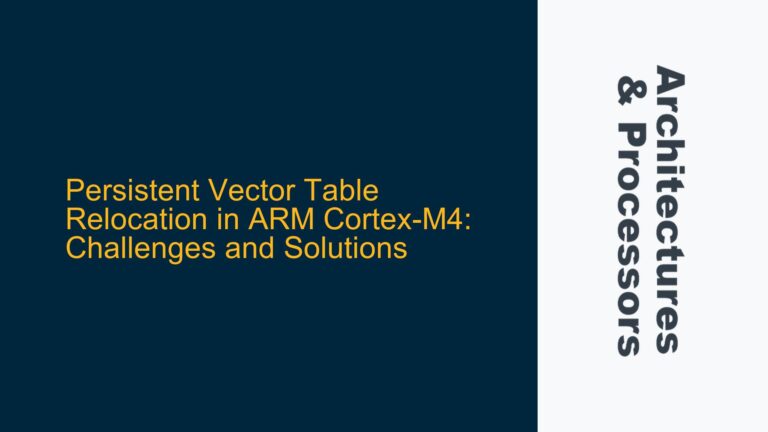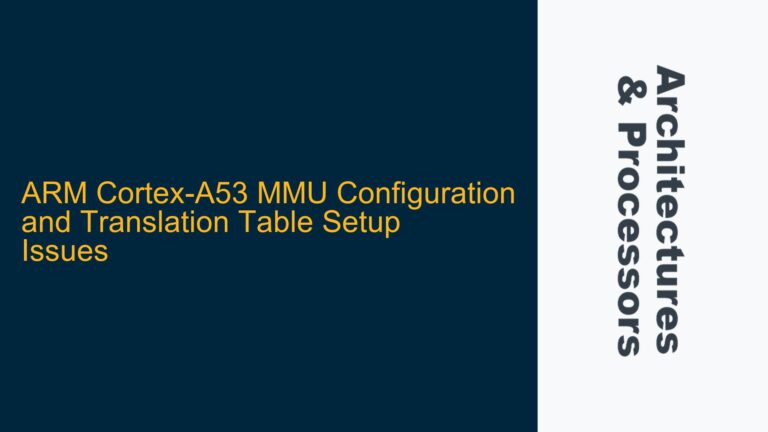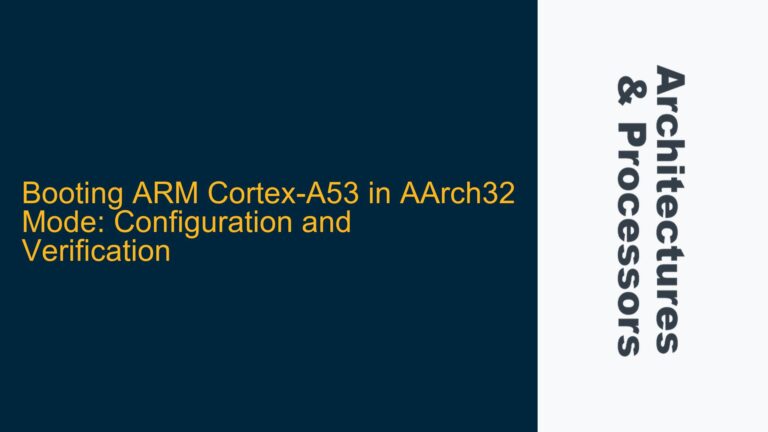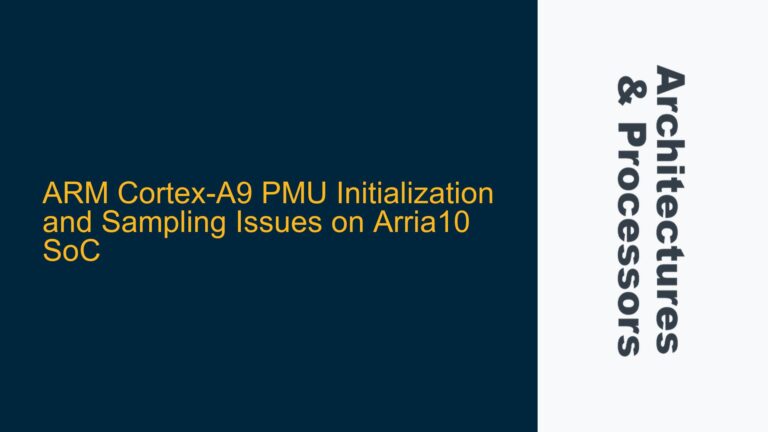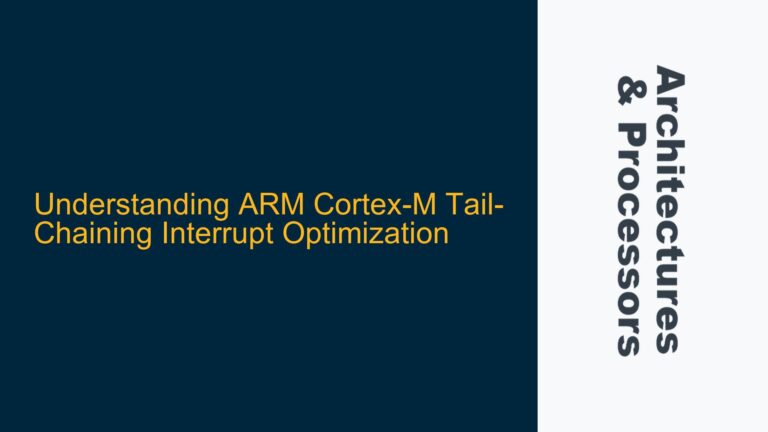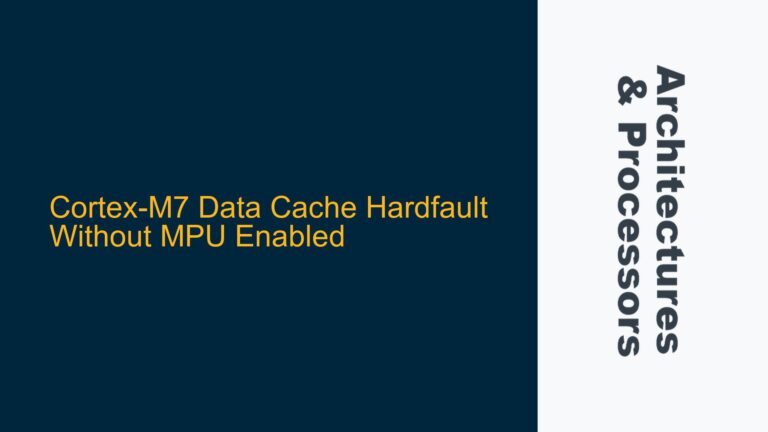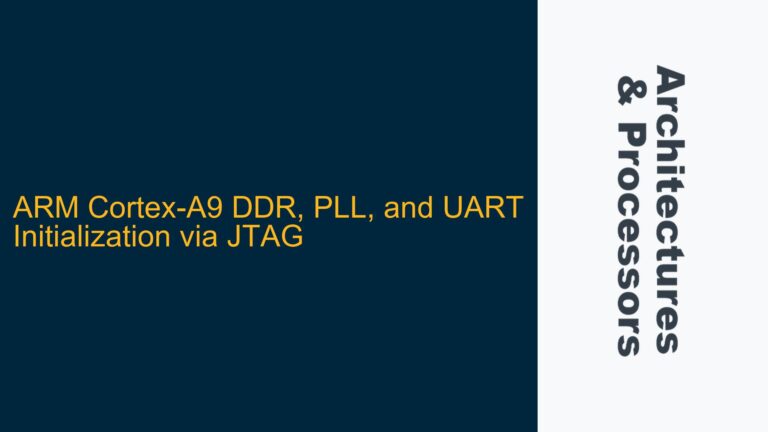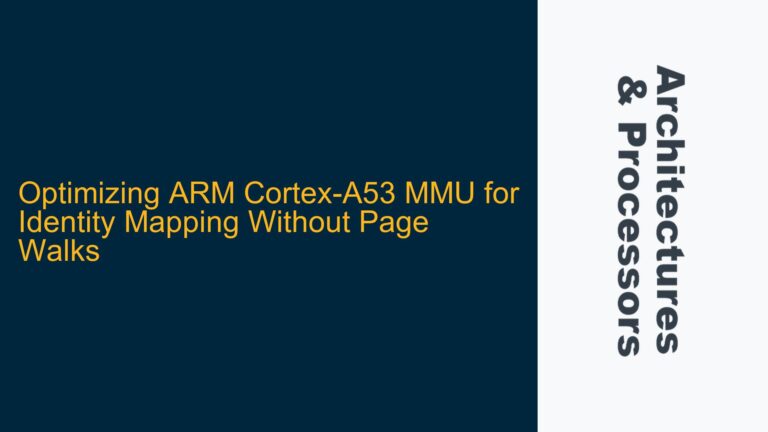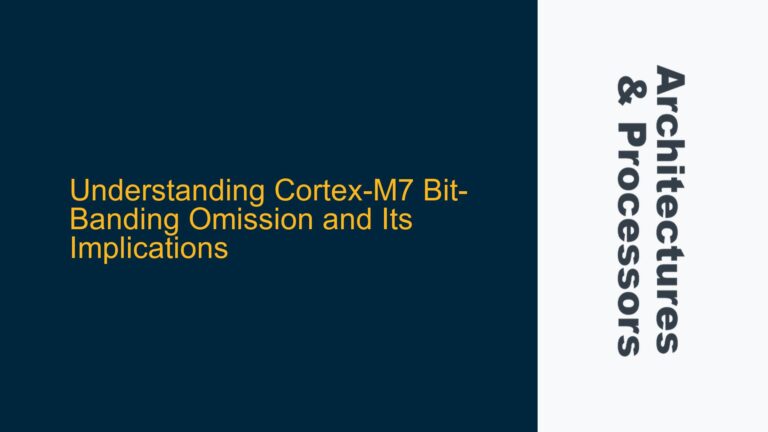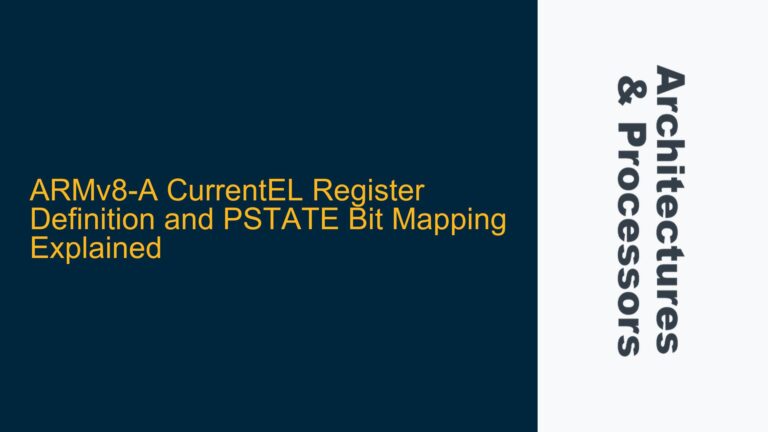Persistent Vector Table Relocation in ARM Cortex-M4: Challenges and Solutions
ARM Cortex-M4 VTOR Reset Behavior and Persistent Relocation Requirements The ARM Cortex-M4 processor, like other Cortex-M series processors, utilizes a Vector Table Offset Register (VTOR) to define the base address of the interrupt vector table. This vector table contains the initial stack pointer value and the addresses of exception handlers, including the reset handler. By…
